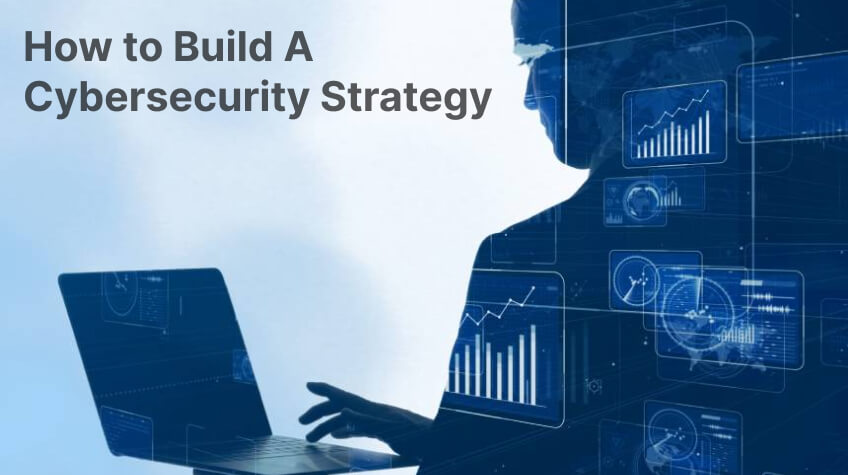
In 2026, technological advancements are taking the world by storm. Unfortunately, there are flaws, such as increased cyber-attacks and threats. With the rapid increase in cyber threats, no business is safe. There’s also no organization too small to target. Given these challenges, it’s crucial to understand the components of an effective cybersecurity strategy.
Hackers have developed sophisticated ways that manipulate your systems. The risk of losing your operations to them is worrying. A rigid cybersecurity plan is a sure way to avoid cyberattacks. The different cyber-attacks require stringent protocols to protect your business and organization. These measures are collectively known as cybersecurity approaches. They’re action plans to increase your organization’s cybersecurity resilience.
With that in mind, let’s delve into the process of building a robust security strategy for 2026, starting with exploring the policies on Cyber Security.
1. Explore The Policies On Cyber Security
The main idea behind setting cybersecurity strategies is to safeguard your operations and avoid being an easy target. It’s essential to consider the policies aligning with your business to create an excellent plan. While there’s no one set of policies that are a sure bet, it’s best to explore the approaches and abide by cyber security guidelines that can protect your business. If you go through the policies, you can identify the policies that would be appropriate for your strategy.
To bolster your cybersecurity strategy, it’s crucial to implement a comprehensive insider threat program. Such a program addresses the risks posed by both malicious and unintentional actions within your organization, safeguarding sensitive data and minimizing potential security breaches.
Security policies and procedures are vital. They protect a wide array of your business infrastructure. Without them, you expose yourself to cyber-attacks that, when successful, can throw you off balance. Below is a list of security policies and procedures you should have in your strategy:
- Password Requirements: It’d help if you create solid passphrases and restrict the passcodes to specific personnel. The password should contain strong combinations that one can’t easily guess.
- Email Security Measures: You need guidelines on blocking, reporting, and deleting spam emails. It’d help if you also had a policy on reading email attachments from trusted sources and partners only.
- Data Handling: Set procedures for handling files, such as lockable drawers or restricted rooms. Create a sharing and data transfer policy for cloud and online interactions.
- Work And Office Devices: In most cases, most attacks occur on team members’ work gadgets. As such, it’d be a great call to set policies on using work gadgets and processes to report lost devices.
- Internet Access Standards: The policy on internet access outlines social media sites that the team can visit when working on their office gadgets.
Also see: Top Cyber Security Tools for
Setting the above policies can limit the threats and help you control the situation. Once these policies are in place, the next crucial step is to determine the risks and threats.
2. Determine The Risks And Threats
An efficient strategy requires a clear understanding of what you’re up against. Understanding your threats’ landscape should be your priority. It’s so because the threats are different. Once you know the dangers, you can create a proactive strategy to avoid them. Some of the common cyber threats include:

- Malware: It’s a threat caused by malicious software. The hackers send you a malicious attachment. If you click on the link, you initiate the installation process of the software.
- Denial Of Service: This attack drives traffic to your network, so you can’t respond to requests in your emails or website. During the downtime, the hackers might launch other attacks that build on the initial attack. For instance, they will likely introduce a Distributed Denial Of Service (DDoS). While most DOS attacks don’t require ransom, they cost you time reclaiming your operations from hackers.
- Man In The Middle(MITM): In this attack, the hackers intercept your transactions and steal data. Some commonly stolen data in MITM attacks include passwords and bank account details. They can also convince you to change your credentials or initiate money transfers to their accounts.
- Phishing: It’s one of the oldest cybercrimes involving hackers sending fake communications. In business setups, hackers target customers. They send instructions to change their details, such as credit card logins. They can also install malicious software on your gadget if you follow the instructions.
- Spoofing: The attackers disguise themselves as trusted sources and approach the target to steal personal information. It can take several forms, such as domain spoofing, where the hacker impersonates a credible business and fools people into trusting them. Other types of spoofing include email and Address Resolution Spoofing (ARP).
- Identity-based Attack: The attacker compromises your team member’s credentials and takes over their system. It’s one of the most challenging crimes to detect because the hacker can adopt the team member’s behavior and lay low before launching the attack.
Evaluating your previous attacks can help you to formulate a successful strategy. You can also learn from competitors or intelligence feeds. After understanding your threat landscape, it’s important to document your cybersecurity policies to address the threats and minimize downtime.
3. Document Your Cybersecurity Policies
Writing the plan is vital in building the best strategy. A documented strategy outlines the responsibilities of your team in ensuring the strategy is successful. Remember to include specific details and recommendations on what to do when a threat arises. Documenting the plans makes it more straightforward to carry out reviews and identify weaknesses in the strategy. It’s also helpful when you need to consult on handling a situation. This way, you act fast before the damage is severe.
For instance, your information Technology (IT) technician. Their interaction with the systems can open their eyes to some concerns that would be valuable for your strategy. It’d help if you also informed them of any changes to the system. That way, they’re more supportive and open to the process. They’ll also not fight the strategy, which ensures you meet your security objectives. You can ask for insights from departments directly affected by the threat and incorporate them into your team member security policies. Once these policies are in place, the next step is to design your cybersecurity infrastructure.
4. Design Cybersecurity Infrastructure
Your strategy should cover the cybersecurity framework. The cybersecurity infrastructure consists of the best practices to prevent and contain the risks. Your infrastructure needs zero trust security. This means the security protocols should evaluate every request to access your systems.
One advantage of a zero-trust security infrastructure is that you may limit the probability of a hacker compromising your devices and being successful. Other benefits of designing a cybersecurity infrastructure are:
- Efficient and comprehensive security check that covers all the risks
- Eliminating the inefficiencies that could result from multiple tools managing the security risks
- Reducing the visibility gaps that could create loopholes for threats and attacks
A good cybersecurity infrastructure should provide an in-depth defense. However, establishing a robust infrastructure is not enough; it’s equally important to monitor and review your security measures regularly.
5. Monitor And Review Security Measures
You’ll need to constantly review and monitor your security measures to keep up with the cyber threats. Scheduling regular security audits helps you stay on top of emerging threats. It ensures the standards, practices, and infrastructure you use are current and equal to the task.

Remember, a minimal vulnerability can result in a vast effect if hackers get access to your systems. Thus, it’s best to improve your security measures continuously.
Conclusion
Building a cybersecurity strategy is fueled by the need to prepare for the worst-case scenario. It’s the best way to ensure you bounce back after an attack or prevent hackers from attempting to compromise your business operations. The best strategy consists of detailed protection procedures and cybersecurity techniques that have stood the test. Use the tips above, and you can be sure to build one and future-proof your business.






